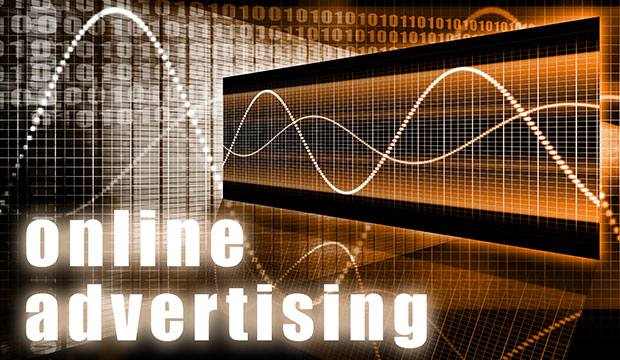Fraudsters have been stealing online advertisers blind — to the tune of US$23 billion, based on the latest industry report from Cheq.
“The Economic Cost of Bad Actors on the Internet, Ad Fraud 2019” conservatively places the direct global economic costs of ad fraud at $23 billion and suggests that indirect economic and social costs might increase the total to $30 billion.
Marketers have been wasting billions of dollars on digital ads that never reach buyers’ eyes. Up to 30 percent of ads are impacted by fraud, which affects 21 trillion online ads each year, according to the report.
Cheq, a military-grade cybersecurity company, commissioned the study of the full extent of online ad fraud. Economist Roberto Cavazos, a professor at the University of Baltimore, conducted the study using the latest economic analysis tools, proprietary Cheq data and expert interviews.
Cavazos, who has studied the economic costs of fraud in many sectors for decades, was stunned by the scale of fraud in online advertising. The online advertising ecosystem has created a situation in which the interests of more than 20 parties are not aligned. There is little regulation or connectedness and few disincentives against fraud.
“Solving this problem will require honest and robust methods to confront the realities and tackle this challenge,” he said.
This research was an effort to address the lack of understanding about the scale of online ad fraud, with wildly different numbers attributed to the problem, and very little real independent research into its complexities, according to Cheq spokesperson Jonathan Marciano.
“The report does argue that ad fraud needs to be recognized as serious and not a ‘victimless’ crime,” he told the E-Commerce Times. “Just understanding its scale and the damage it is doing is a huge step to change.”
Worse Before Better
The fraud situation will worsen, Cheq warned. The direct cost to advertisers could hit $26 billion in 2020, $29 billion in 2021, and $32 billion in 2022. The cost burden of ad fraud will fall disproportionately on small firms that have fewer resources than established brands.
“Our experience suggests that higher-end campaigns through well-known, reputable advertisers are subject to a five percent fraud rate,” the report says. “Lower-end campaigns experience a much higher rate of ad fraud, potentially up to 50 percent.”
Spending on online advertising now overtakes traditional media like TV, radio, outdoor, and print. It is wishful thinking to believe that fraudsters will not continue to be creative and innovative in targeting online advertising dollars, said Cheq CEO Guy Tytunovich.
“Every day, we are seeing growing sophistication and frequency of attacks against online ad campaigns,” he said. “The problem is exacerbated by the number of participants in a complex system and the unique circumstances allowing bad actors to thrive.”
Report Highlights
While direct global economic costs of ad fraud are conservatively placed at $23 billion, indirect economic and social costs may increase the total to $30 billion, according to the report.
The research considered ad fraud within the context of other fraud-fueled industries. It also took into account indirect costs that previously had not been factored in, Cheq’s Marciano said.
Ultimately, marketers are the big losers from ad fraud, with big brands spending billions of dollars globally on ads that are never viewed. Marketers lose at least 20 percent return on investment on advertising campaigns, he added.
“Consumers also suffer,” he said, “as with more money diverted to fraud, this threatens a free Internet, which relies on efficient online advertising.”
Not all instances cost the same, and in many cases, fraud disproportionately affects low-level campaigns with cheaper CPM (cost per thousand), according to the report. It found that a 7.5 percent composite rate of total ad spend lost to ad fraud reflects a mix of both lower-end and higher-end ad campaigns. Combined losses totaled $23.7 billion in 2019.
Causal Factors
One obvious cause of the growing attacks on online advertising is the lack of regulations — either by government agencies or the ad industry itself.
Two other factors feed the revenue frenzy. One is the complexity of the online advertising ecosystem; the second is a lack of transparency. Both contribute to creating a growing incentive for fraudsters to hijack the $316 billion global digital advertising budget.
Online advertising is uniquely susceptible to fraud compared to other sectors such as finance or health, the report says. The lack of oversight or transparency and the failure to achieve high-profile prosecutions continue to make online advertising a high-value target for bad actors.
Current cost estimates might actually be higher if researchers could calculate indirect and opportunity costs. These two numbers refer to the losses and opportunity costs to society as a result of systematic fraud. Such indirect costs include less trust, reduced innovation, and disinclination to spend on online advertising, explained the report author.
More Current View
The Cheq report’s findings differ from other industry reports with respect to ad fraud intensity. The Cheq report foretells a far worsening problem.
Cheq applied a different strategy that broadened the extent of its research. The Cheq report accounts for the indirect costs of ad fraud, not just the immediate financial loss for advertisers.
Other studies pin the cost of ad fraud at about $7.2 billion per year, but they fail to capture the full extent of the damage, according to Cheq.
Other studies often extrapolate from limited samples, analyzing only 27 billion out of 70 trillion total annual ad impressions, for example. Other studies on online ad fraud also restrict the scope of their research to botnets, which are only one source of ad fraud.
“Where studies have shown that ad fraud is lower or even declining, we think this particularly unlikely,” the Cheq report states. “Digital ad marketing is growing at a high rate and thus is an attractor for increased fraudulent activity.”
The Pain Point
Ultimately, it is the brands that shoulder the brunt of the losses. They end up paying for the fraud or the verification tools to stop it, observed Warren Zenna, president of Americas of Location Sciences.
“It is possible to combat fraud through a combination of verification platforms, but the ad tech value chain makes it difficult because everyone is paid on a per-impression basis. This means that cutting fraud reduces impressions and impacts ad spend,” he told the E-Commerce Times.
with currently established types of fraud, such as viewability, the brands, agencies, and publishers in the U.S. are blocking out a lot. Still, it has required some time for that to take root, Zenna explained.
“The industry is economically incentivized to ignore the issue until the brands start demanding oversight,” he added.
Ad fraud hurts pretty much everyone, said Rob Friedman, executive vice president of Digital Element. Advertisers especially are hurt because they are not getting what they pay for.
Publishers are hurt because it drives ad rates down and gives advertisers lower confidence in advertising, meaning they will pay less, he told the E-Commerce Times. Also, spoofing premium sites can steal or redirect ad traffic to lower-quality sites. The publisher’s reputation also suffers.
Consumers get hurt as well because if sites can not monetize as well through advertising, it may drive them to charge more for content and apps, Friedman pointed out.
Need for Change
To protect all parties on major advertising platforms, a stronger initial process for the creation of business advertising accounts is needed, urged Nick Shackelford, a founding member of Structured Social.
“When a business is getting up and running, they should and would have legal documents showing that they have formed a legitimate entity, selling legitimate products or services,” he told the E-Commerce Times, “and if unable to provide such documents, they are then prohibited from selling on such major advertising platforms.”
Innocent advertisers often are caught up in overblown shutdown campaigns. Once the advertising platform executives get wind of such fraudulent advertisements, they take swift action to eliminate the fraudulent ads on their platforms.
“What this results in is large sweeps against similar advertisers, whether or not they are fraudulent advertisers. Think guilt by association,” said Shackelford.
Misplaced Trust
Part of the problem is that advertisers trust the same company that serves the ads to report on their effectiveness. Therefore, incentives in the big online advertising giants are naturally toward creating metrics that obfuscate the true effectiveness of the ads they serve so that they can sell more of them, suggested Phil Nottingham, director of marketing at Wistia.
“The assumed nature of an ‘impression’ is that a real human being has at least observed the ad in passing, but this latest report — and others like it — shows that too often this isn’t really the case,” he told the E-Commerce Times.
Advertisers should worry not only whether they actually got what they think they paid for but also whether their purchase actually delivers the expected results, he added.
“The whole thing is a virtual hallucination. You are using an ad platform’s tools to manage an ad campaign and verify results,” said Samuel Bucholtz, cofounder of Casaba Security.
If that platform is systematically overcounting ad impressions or under- or over-reporting views, the buyer would never know. It is all about trust, he told the E-Commerce Times.
Taking Action
Cheq’s aim is to spotlight the need to stem the increasing fraud rates. Greater resources and actions are needed, including better use of technology to deal with the problem of ad fraud, noted Marciano.
It’s critical to “recognize the reality of fraud in online advertising and that cash follows the money,” he said.
Toward that end, Cheq offers some basic advice for online advertisers:
- Create a unique identification for your traffic sources.
- Ascribe a unique identification to your traffic sources to monitor the amount of traffic and its sources, then look for anomalies. If for example, you suddenly find you are buying a very large number of impressions on a particular site, this suggests fake bot traffic. Be wary of small sites getting lots of impressions, said Marciano.
Another flag to look for is if a small site is suddenly getting you lots of impressions in your campaign or if a very niche site in a country is suddenly getting you lots of global impressions. “This is highly suspect and points to location fraud,” he said.
- Employ an ad-verification solution that performs deep analysis.
- Probe vendors of services, asking questions such as these: How many parameters do they have to uncover bots? Do they rely on simplistic fake IP lists? What techniques do they use to investigate the evolving threat? Do they merely report on fraud, and can they block ad fraud in real time?
Fighting Back
Digital advertising is growing, and a career in online ad fraud is both profitable and relatively non-risky, Cheq’s Marciano said.
“To really counter this, the technology must be on a par with the growing sophistication of the threat, which is why cybersecurity and AI advances have been adapted and tailored to stop the threat of online criminals who are defrauding brands of advertising dollars,” he noted.
Online advertising today is a big cat-and-mouse game between the criminals and the tech companies, but the individual companies — the ad buyers — do not have any real control over it, noted Chris Weber, cofounder of Casaba Security.
“There is some recourse to be had with service level agreements, in which the ad buyer could request a guarantee that a certain percentage of clicks won’t be charged, in order to offset the risk of click fraud, such as about 15 percent,” he told the E-Commerce Times.
Ad platforms could address this by integrating advertising capabilities directly inside the Web browser code itself, rather than leaving it up to the things that run inside the browser, like HTML and JavaScript, he suggested.
That is what the Brave browser does to maintain user privacy, Weber said. At the same time, it offers an advertising platform that is based on integrity, promising that audiences and views are 100 percent authentic and guaranteed.























































Social Media
See all Social Media